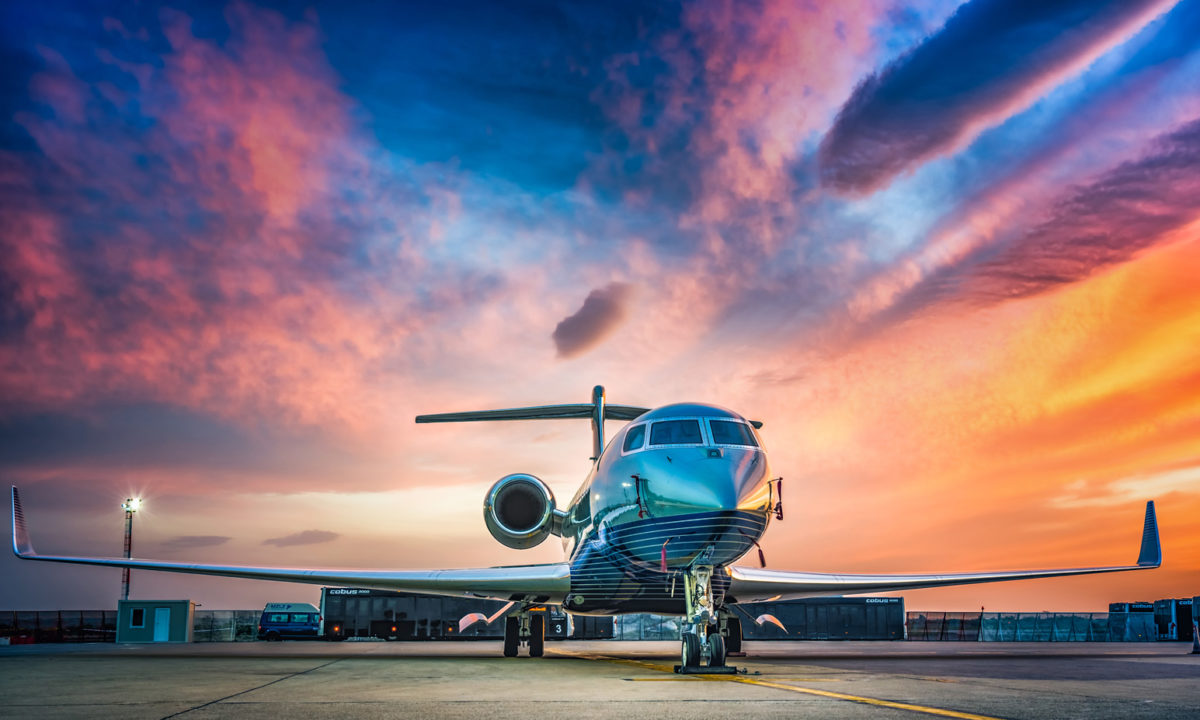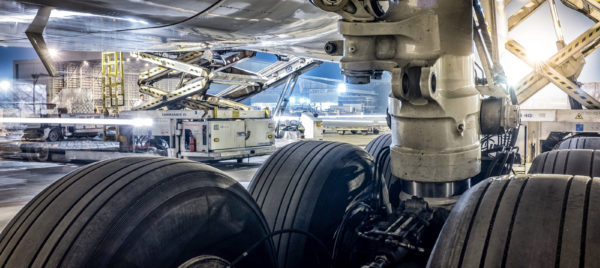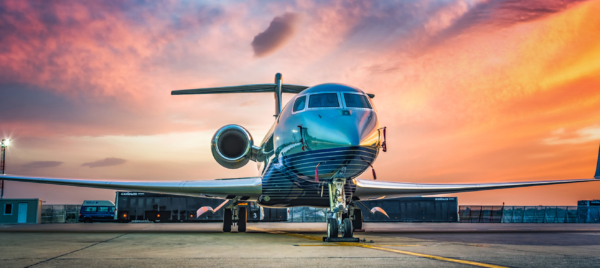AviTrader MRO – Pandemic puts a brake on wheel component services
March 2021
COST MANAGEMENT FOR WHEELS AND BRAKES: download a PDF of the article
As air carriers prepare to increase their scheduled flying since the pandemic hit and remove aircraft from storage, they will likely be looking at ensuring more wheel and brake cost predictably, as Keith Mwanalushi reports.
Landing gear components such as wheels and brakes have seen little maintenance work over the past year. Outbreak of the COVID pandemic in December 2019 left the entire aviation industry in disarray and the aircraft wheels and brakes market was no exception. With travel bans and quarantine regulations enforced in every global market this left most of the global aircraft fleet in storage or parked.
“There is a common misconception that having an aircraft grounded provides a great opportunity to service the wheels and brakes,” highlights Phil Randell, CEO of World Aero. “This isn’t the case, mostly because wheels and brakes are operated ‘on-condition’ and if we’re being honest, operators simply don’t have the available cash right now for the completion of nonessential tasks.”
Randell reminds that tyres and brakes do not have a set lifespan; notwithstanding any defects, they can stay on the aircraft until worn-to-limits. “If your car goes in for a service, you wouldn’t automatically change the tyres unless the tread is worn. The same applies, unfortunately, to wheel and brake services in that they very much follow aircraft utilisation. The more the aircraft is flown, the more work we see as a result, it has therefore been relatively quiet of late. However, the world has seen a surge in demand for cargo capacity which, to some degree has offset the considerable reduction in airliner work.”
At AAR Corp, they too see a drop in commercial business, but at the same time they have seen an increase in the cargo business. “Some customers have been deferring major repairs, due to the advantage of having excess spares because of their partially parked fleet. Additionally, at the beginning of the pandemic, airlines were attempting to renegotiate existing contracts for more favourable terms,” notes German Alex Lara, AAR Director Wheel and Brake Services.
David Kahl, Head of Wheels and Brakes Solutions UK, Lufthansa Technik concurs saying the pandemic has hit the aviation sector hard and all airlines are looking to reduce costs as much as possible. “Airlines have been looking to find solutions around how to deal with storage and de-storage requirements on the aircraft, which typically include protection against the elements with subsequent removal of wheels after several months of parking on reactivation.”
Kahl mentions the costs of removal is the pain point which airlines are looking to manage with rotation of their fleet or stringent long-term parking – in essence; avoid removal and cost generation wherever possible. “On brakes however, we have seen an increase in oxidation on parts – from structural housings, clips to partial oxidation on carbon heatsinks. MRO shops have seen a significant reduction on the removals which is what continues through this day.”
Kahl also observes that the aftermarket for wheels and brake parts has changed too – “Parts which were once rare or expensive can now be procured in abundance at low rates with even OEMs offering significant double-digit discounts on the parts. This will likely not change for a while until the markets operate above pre-COVID levels.”
Integrated solutions for wheels and brakes
Several players in the market have developed solutions such as charge per aircraft landing programmes and other PBH agreements for associated wheel and brake repair and overhaul services and aircraft operators will be looking for support solutions to achieve cost efficiency as their aircraft get airborne again.
Ellie Pinington, Programmes Manager at AerFin advises that when selecting new aircraft, the operator can reduce some of their operational costs for wheels and brakes by selecting from competing OEM’s, if there is a choice available, that would be the start of the process for the operator. She says for both a new aircraft selected or a tier two or three operator, the evaluation of ownership and tied up capital versus Cost Per Aircraft Landing Programmes (CPAL), where the ownership of stock resides with the supplier, would be the next step.
Pinnington adds; “As with PBH contract support, operators are looking at options not to tie up capital on spares, not have issues when exiting fleets, utilising existing MRO networks, and minimising management process and costs. CPAL are a preferred option for airlines, these give service level protections, access to stock and inventory, guaranteed costings to manage cash-flow and known costs in support of the product.”
At World Aero, they have always offered CPAL and fixed cost per shop visit options to help operators manage their wheel and brake costs more predictably, Randell tells. He explains that these options, versus a traditional ‘Time & Materials’ repair method, allow the operator to spread maintenance costs across their overheads, rather than receiving additional unexpected costs which can be unwelcome, especially during periods of low utilisation.
“At World Aero we feel that rather than simply spread costs, a long-term objective of reduction of repair charges is preferred. This comes through enhanced maintenance standards at overhaul, additional attention during tyre changes and constantly challenging our supply chain and workshop processes, to reduce piece part and processing costs respectively,” Randell states.
Like most MRO providers, AAR has a CPAL offering, all-Inclusive flat rate repair and overhaul, and tire management programmes. AAR also provides spare wheel and brake inventory, which Lara says alleviates customers from the burden of additional investment – “These programmes not only offer cost efficiency, but they also offer improved cost projections and accounting simplicity,” he says.
Over at Lufthansa Technik they have charge per cycle rates to cover the cost of operation per flight. Kahl explains that this makes it easier for airlines to plan their costs and have a scalable model for their wheel and brakes supply with the pay for what you fly formula. He says the crisis has not changed this approach in the market much and smaller carriers are still looking to have event-based pricing, but major carriers continue to look at the PBH agreements.
Adding to that, Kahl says Lufthansa Technik offers to provide a leasable stock for their fleets. “This lowers the airlines initial investment cost and provides a scalable system. Something that Lufthansa Technik has been very successful at in the market alongside our material pools.”
Maturing brake technologies
The aircraft manufacturing industry has deployed carbon technologies in recent years across various aircraft platforms and seemingly, these newer technologies will have an impact on the cost of wheel and brakes services from the operators’ perspective.
Richard Jowett, VP Purchasing and Programmes at AerFin says carbon brakes have been available to operators for some time, they provide significant advantages over steel, some of those being weight and thus less fuel burn. The longevity of carbon versus steel which reduces the volume of removals and therefore the cost of maintenance and stock required to support the brake removals. “We have seen development of the electric brake on the B787, though the carbon installed in the brake still is the key to the number of removals, as is type of operator, conditions aircraft operate in, weight and so on.”
Lara from ARR points out that the initial cost is higher, since the overhaul of a carbon brake could be as high as three times the cost of a steel brake, but at the same time the carbon brake will provide two to three times the landings.
Airbus and Boeing have long opted to operate this technology on their airframes or retrofitted, the B737NG being a prime example. A 737-steel brake used to last around 1,100 landings before removal, this has now jumped to 2,000 landings with carbon brakes, reports Kahl. “Some aircraft types pending the OEM on the brakes see this number close to 3,000 landings, resulting in lower maintenance costs and associated labour.”
Kahl sees that whilst carbon may be more expensive than steel on a list price basis, the OEMs have expanded their business to offer an added PBH model to support carbon usage per landing, consequently making it more cost effective than steel to operate, in most cases.
Kahl feels the largest leap will be the transition from carbon hydraulic brakes to carbon electric brakes which started with the B787 and now the A220. “This will allow for further cost savings on the operator side as certain line items may exchange on ship which previously necessitated the removal of the complete brake for repair. However, this is very much in its infancy and will only breakthrough in the next generation of aircraft due in the 2030s.”
Randell has indeed, monitored the continued roll-out of carbon brakes across more and more aircraft, with even the smallest now featuring carbon brakes as part of the initial design certification. “In addition to this, there are active ongoing retrofit programmes, for common types such as the 737NG, to replace steel brakes with carbon equipment. This also requires replacement main wheels too. The cost of the new components is high, and the value of the old equipment now negligible however, vendors offer huge incentives to fit their equipment, such as free wheels and brakes for the fleet.”
Randell explains that vendors profit from the supply of spares and consumables used in the maintenance of wheels and brakes during their lifespan, so once a customer has retrofitted, perhaps for free, the revenue stream starts from that point. “It’s the long-term operating cost that needs to be understood, not today’s cost of retrofit. Importantly, whilst the repair cost of carbon brakes is considerably higher than steel types, the on-wing time is often three times that of a steel brake. This brings significant savings in operator’s manpower for brake changes, logistics of routing units to and from overhaul, spares holding levels and of course administration. And let us not forget the lure of reduced fuel burn due to lower brake weight, although this is less of a factor for short-haul high-cycle operators,” Randell concludes.



